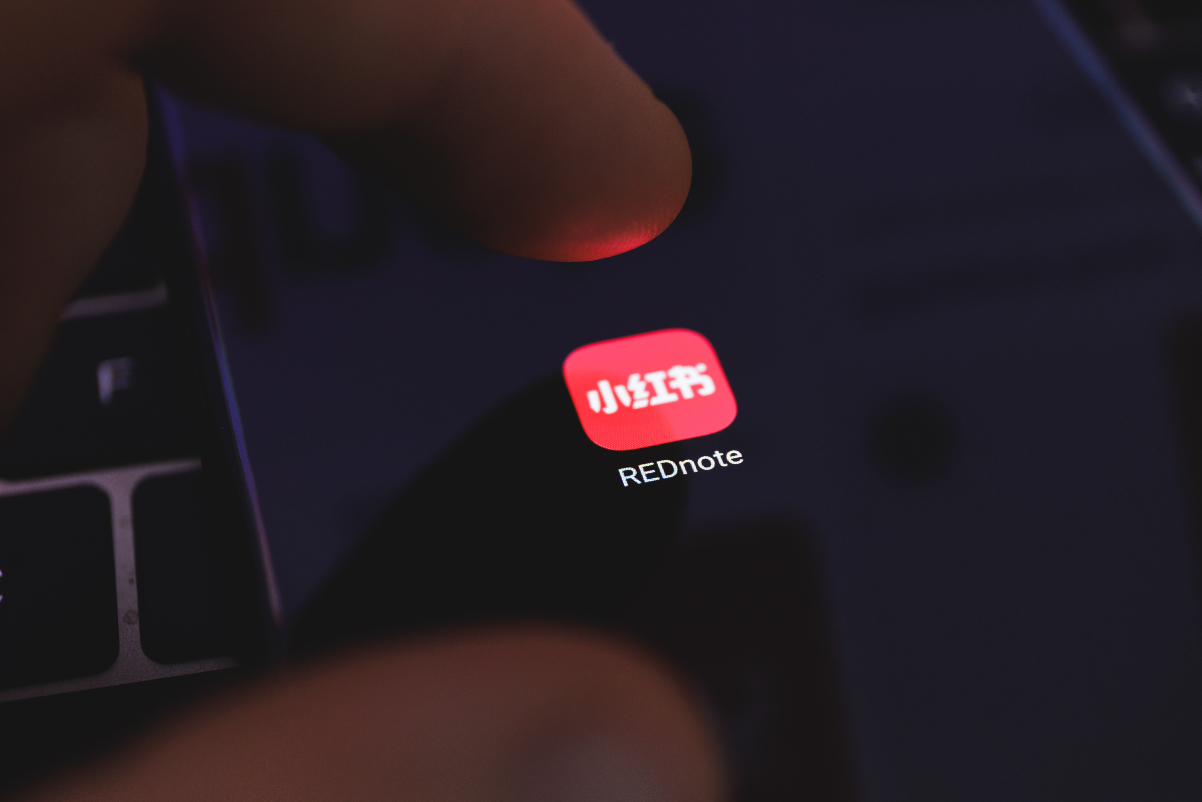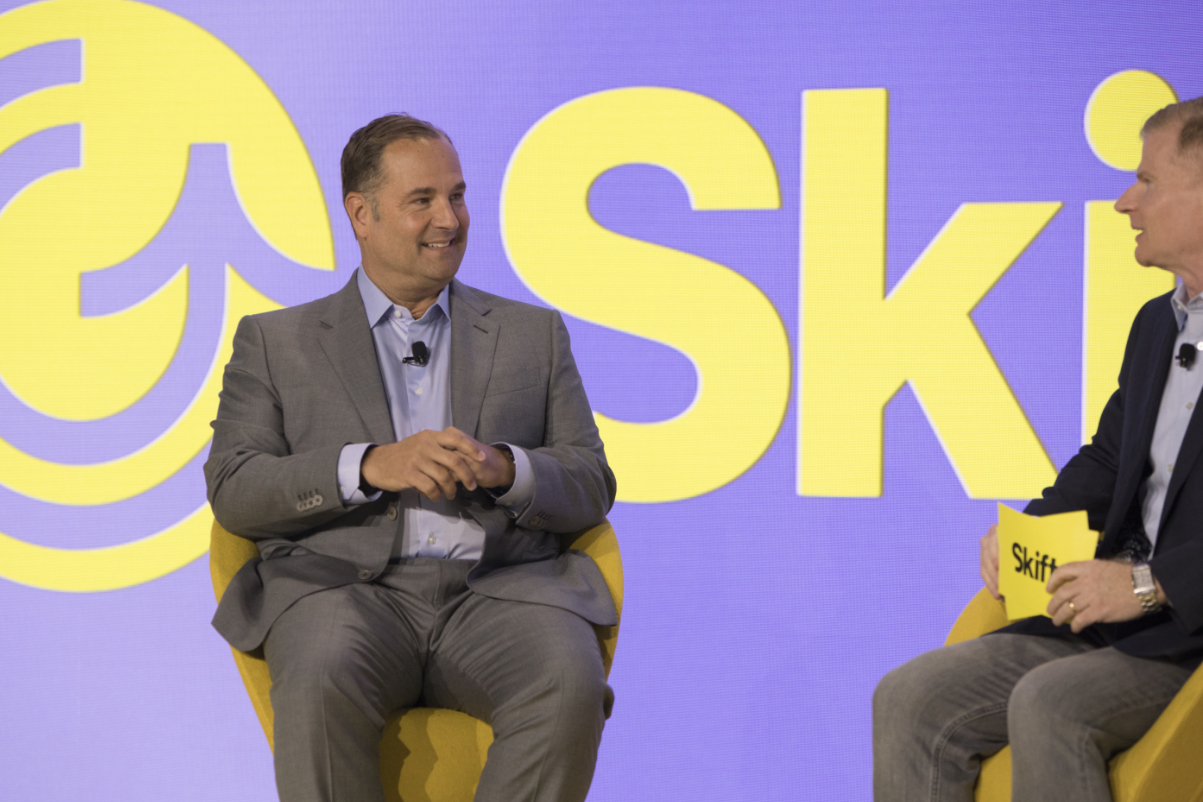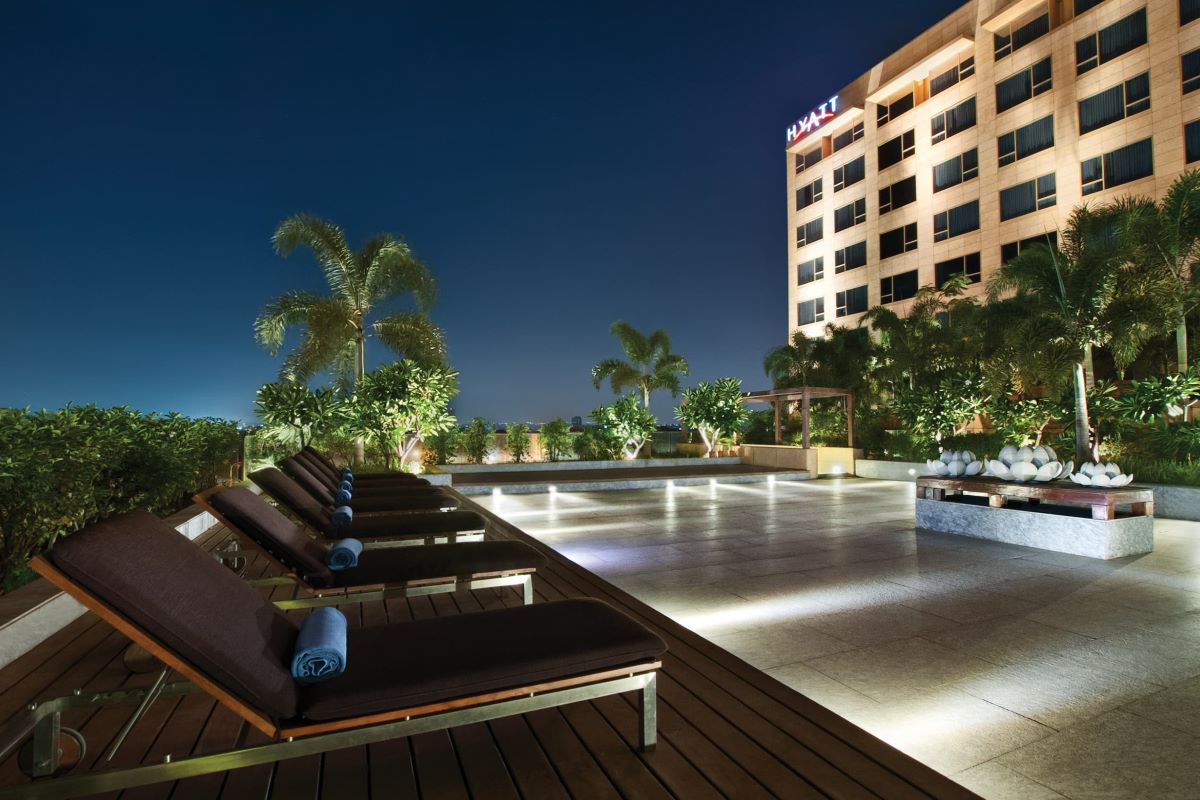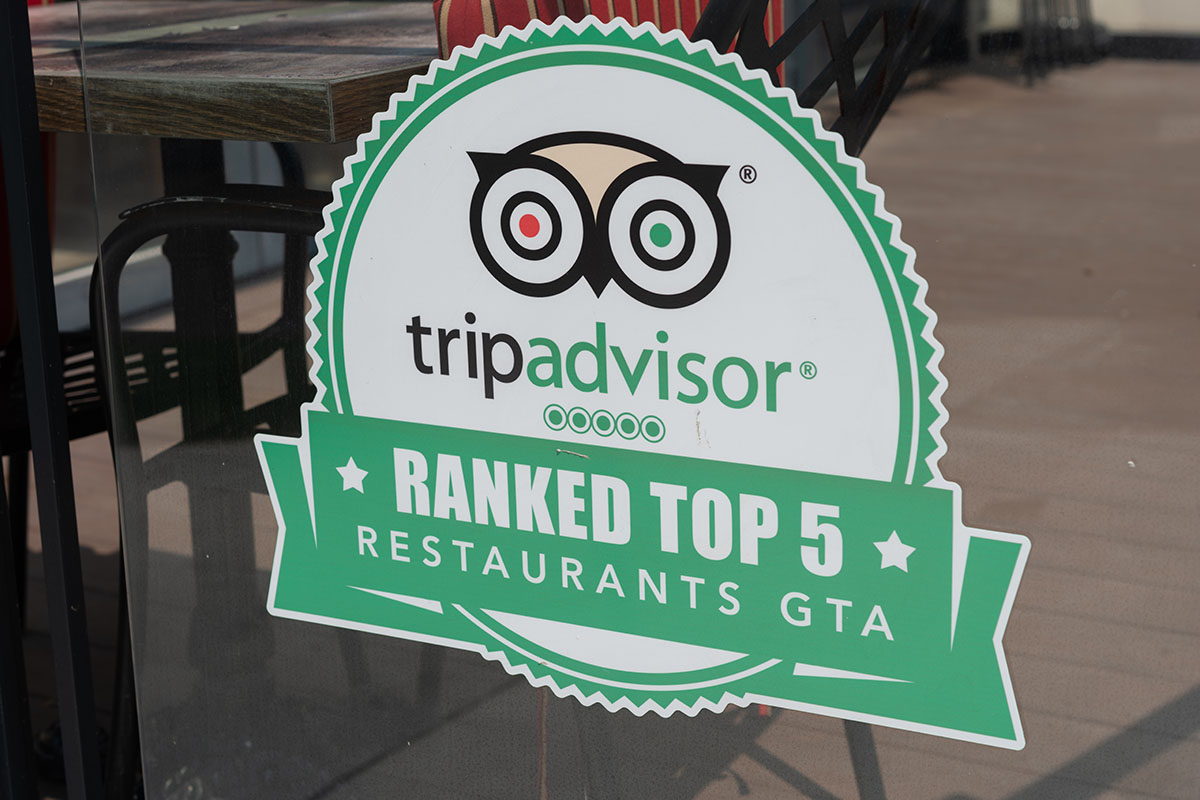Sabre's Back to the Basics Strategy Shift Starts to Bear Fruit
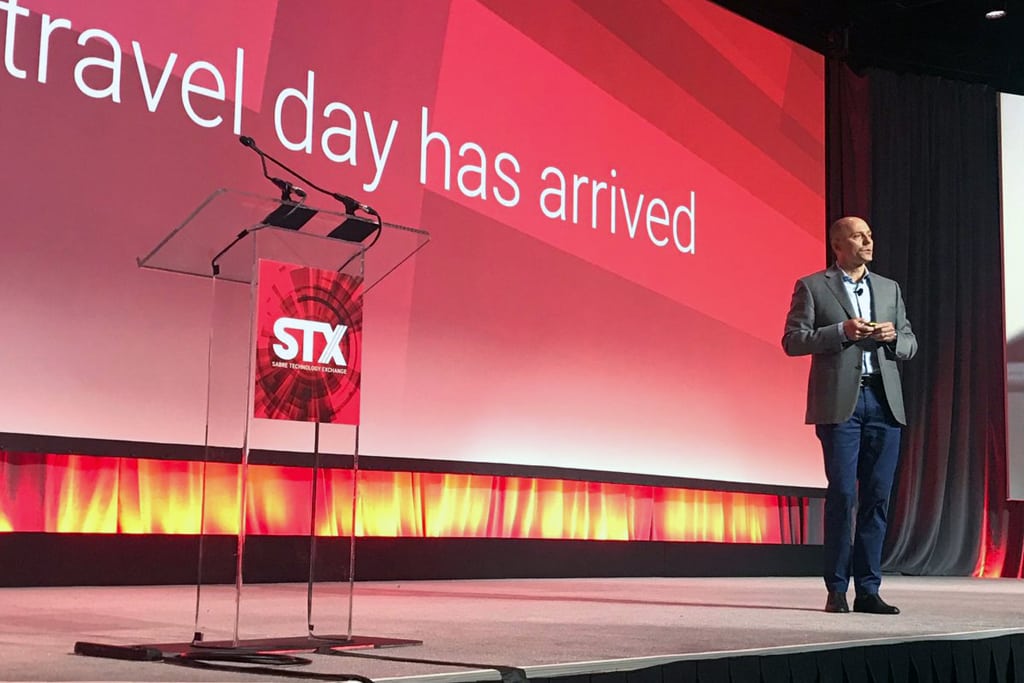
Skift Take
May marks the 17th month since Sean Menke became CEO of Sabre, the travel technology company based in Southlake, Texas.
Menke inherited a company that may not have been in as good a shape as had been suggested by its stock valuation — which had nearly doubled from its 2014 initial public offering.
So the CEO has been reorganizing the business. One of his moves was to cut the workforce by 10 percent, to about 9,000.
On Tuesday, Sabre reported first quarter 2018 earnings. Revenue growth was up 8 percent, year-over-year, to $988.4 million. Its profit rose about 2 percent, year over year, to $121.2 million.
Sabre's free cash flow — a metric investors use to track if a business has a solid financial position — is forecast to rise 18 percent this year to about $425 million.
Investors liked the news, bidding shares up about 8 percent in early trading.
But stock market investors tend to have a short-term view. In the past few years, Sabre has helped to boost its share price via $700 million of dividends and share buybacks.
The cost of doing that is that it failed to invest in research and development at the same pace as its arch-rival Amadeus. The cost of doing that is that it failed to invest in research and development at the same pace as its arch-rival Amadeus. Sabre has spent about $456 million less on research and development since 2013 than Amadeus, per financial statements.
Instead of making up for lost time, while matching Amadeus’ present pace, Sabre has continued to do share buybacks in the past year and said on a conference call Tuesday it would continue to do so for years.
Sabre generated $3.6 billion in revenue in 2017. It serves as a technology middleman for the travel industry. It distributes inventory from suppliers like airlines to buyers like corporate travel departments, more than 425,000 travel agents, and online travel agency Expedia, for example.
Sabre's prime competitors are Amadeus, Travelport, and TravelSky. It has sidelines in selling operations software to airlines and hotels.
Menke's Mission
After the company elevated him to CEO, Menke struck a more diplomatic tone than Tom Klein, his immediate predecessor. Klein's style was edgy. It was notoriously captured in emails that were dismissive of customers and that were shared as testimony during a lawsuit that US Airways (acquired by American Airlines) won in December 2016 against the technology company for abuse of market power.
At first, new CEO Menke kept his cards close to the vest. Workers guessed at his competitive streak, though, given his taste for endurance feats like ultra-marathons, cycling, and raising a family of three boys.
Since then, Menke tipped his hand. In early January, the CEO gathered hundreds of key employees -- out of a global workforce of about 9,000 -- in a ballroom at the Hilton Anatole in Dallas for what was called the Global Leadership Summit.
Menke set forth a new mission. The company would focus on becoming excellent at supplying the technology that powers the fundamentals of retailing, distribution, and merchandising of travel.
Airline Distribution Changes
On Tuesday, Menke announced that Sabre renewed its long-term distribution agreement with United. The company had previously announced that last year it had signed a renewal with Delta.
Its negotiations with American Airlines have been contentious, partly as a fallout from the lawsuit, traditional animosities, and complaints about how Sabre distributes American's airfares. But Menke said he was optimistic.
If you look at Europe, Sabre has faced more headwinds; its market share is about 16 to 17 percent, and Amadeus owns a majority of the market. Three airlines there are attempting to push some of tickets processed by the middlemen into the airlines' direct channels through a series of surcharges and private agreements.
Menke expressed skepticism that the airlines' direct efforts will work. He referred back to his stint as Air Canada's chief commercial officer from 2005 to 2007. During that time, he said, he took the airline's Tango branded fares out of Sabre and its rivals.
He said that it only resulted in a five percent movement of share away from Sabre and its peers to the direct channel, and that Air Canada eventually gave up the fight.
That said, Sabre has failed to negotiate private agreements or other terms with Air France/KLM, one of the airline groups pushing direct selling, while Sabre rivals Amadeus and Travelport signed deals at the end of March. Agencies tied into Sabre therefore have been selling tickets that are more expensive than what their competitors can offer.
Ironically, because Air France/KLM is now out of contract with Sabre, it is paying more to Sabre, per ticket, because of extra fees. Sabre has not been passing that along to the agencies. A company spokesperson said Monday that Sabre had no plans to compensate agencies for the problem.
Sabre also offers operational tools to airlines, such as passenger service systems. Clients complained that projects were taking too long to deliver, and Menke has worked to streamline customer service but to also kill many products to focus on a few winners.
The Management Consultant Cure
To understand Menke's vision, it's not enough to know he wants to focus more on retailing, distribution, and fulfillment. One has to go one level deeper. To do that, one needs to think about management consultants.
While turning over most of the senior leadership, Menke has elevated or installed to key positions several people with pasts at top-tier consulting firms Bain & Company, Boston Consulting Group, and McKinsey.
Clinton Anderson, a former partner at Bain, became president of Sabre Hospitality Solutions, which is the company's fastest-growing unit and provides operational tools to hotels.
Anderson's key deputy is Balaji Krishnamurthy, vice president of strategy, planning and corporate development for Sabre Hospitality Solutions, and he worked five years at McKinsey.
Brett Burgess, who spent seven years at Bain, was elevated to global vice president of Travel Network product -- a key oversight position of the company's biggest revenue-generating unit, which is in airline distribution and the travel agency business.
Matthew Lane, also formerly of Bain, was hired into the role of vice president of strategy and planning.
Menke hired away from the Boston Consulting Group Saunvit Panda, and last September made him director of strategy and planning. Rachel Naylor, also previously of BCG, was elevated to become a principal strategist at the same unit.
Typical Management Consultant Strategy
We don't know what detailed strategies these former consultants are applying to Sabre.
But we do know how consultants at those three top consulting firms tend to analyze business strategy. It appears as though the company is focusing on its core business, and then plugging in a limited set of adjacent services that promise high-profit margins.
Expect Sabre to cull mildly profitable products to focus on a few where it feels it has a significant advantage relative to other players, can grow them quickly, and produce high margins.
Exhibit A: On Tuesday, Sabre announced it had cut a deal with Amazon Web Services to run many of its solutions, including its hospitality business, on Amazon's cloud-based servers. Sabre had been haggling for months with Amazon Web Services, Google, and other cloud-based providers to cut a deal.
Since its birth, Sabre has run its own data centers, with towers of mainframes still humming at a center in Tulsa. But under the Menke way, third-parties can provide those services more efficiently, and it is better to outsource that and focus on the company's core competencies instead.
The top-tier management consultancies typically embrace conceptual thinking. In brief, companies have to choose which arenas they want to play in based on whether they can win.
One critical concept is that having the leading market share is extraordinarily valuable because it allows one to grow at a lower cost than rivals.
Another critical concept is that a company has to have a unique edge over its competitors in the eyes of customers. To apply this in practice, Sabre should do any given product much better or at a lower cost than rivals or strongly consider exiting that arena.
Milking Cash Cows
How to apply this to Sabre? The BCG famously split companies into four broad categories, one of which was given the technical term "cash cows." Sabre's distribution business is a cash cow, meaning it has a high market share in a sector growing only a couple of percentage points a year at most — or contracting as a share of the global pie, depending on one's analysis.
Sabre has "milked" its air distribution cow relentlessly. It invested modestly because investment would be wasted in an industry with low growth, it thought. Also because its private equity owners were greedy.
But now the cow faces threats. Sabre's larger competitor Amadeus has been outspending it on R&D and, in certain products, is winning more market share -- a sign that customers like some of its products more. At the low end, cheaper versions of distribution tools from small companies like Farelogix and Distribusion are eating away at adjacent parts of its business on a cost basis.
The management consulting worldview is that Sabre should focus on developing products that have a potential to gain market share and generate high-margins and then cultivate any "star" businesses, which are units with a high market share in a rapidly expanding segments.
Sabre is doing this with its Airline services division. The company is enhancing the customer care and delivery and product quality of its high-margin products that have strong demand from customers, such as its AirCenter and AirVision products. It is also supporting its FareOptimizer tool, which helps airlines make dynamic offers and has the potential to be a star business.
But it still risks "milking" its cash cow to such an extent that the cow's market share position is jeopardized and margins could shrink in a short time.
Investors like Sabre's free cash flow, but ignore relative market share. Even while it has more cash than any smaller entrants, Sabre's distribution business is not secure. Product innovation by upstarts has proven in other technology sectors to be a more powerful tool for grabbing market leadership in high-margin arenas than having a large bank balance.
On the hospitality side, things are tricker. Focusing on high-margin products isn't fool-proof. Independent bookstores can't merely sell the 20 top bestsellers and call it a day. The most lucrative customers want at least an opportunity at browsing.
Similarly, Sabre's management consulting mindset seems to be leading it to an a la carte approach to hotel software development. For example, in March it debuted a property management system, but it's a "light" one aimed primarily at one segment of the market, limited-service.
The company is not answering a call from major customers to develop a full-suite alternative to the incumbent offering from Oracle Hospitality. It's focusing on a few high-margin, high growth products, such as its booking engine that hoteliers can add to their websites.
This move has risks. Its new customer relationship management tool may appeal most to hotel customers who are not limited service but are instead operators of four-star or better properties. So the opportunity for cross-selling may be limited if Sabre doesn't offer a full-service suite. And it may be leaving a gap in the market for another competitor to step in and provide the full-service suite that, while expensive to build at first, could create a flywheel effect.
In other words, what do the most lucrative hotel customers want? Hotels are at a pivotal moment. They face $100 million decisions in upgrading their technology platforms for the new era of retailing, data analysis, and digital marketing. The decisions have far-reaching implications for operations, customer experience, and revenue growth.
Sabre's strategy is to build an open architecture with a set of data connections that third-parties can build specialist tools onto.
But cost here is key. Oracle also offers a version of this approach, but it often charges what are in effect tolls on third-parties who integrate. Sabre would need to create significantly better tools or significantly cheaper ones to compete.
Sabre has decided to be surgical. It is betting on potential star products, such as a new Rate Insight tool that can help hoteliers be more sophisticated at revenue management. It said it debuted the product last summer and had 20 chains as early adopters.
Rather than build a full-service property management system or a new core central reservation system, for example, it will try to get further down the path on next-generation retailing, more flexible distribution, better revenue management tools, and creating actionable analytics for hotel decisionmakers by using machine learning and smarter user experience. They need to make sure the technology is cost-effective, stable, and secure — which is a big enough challenge to take on, in its eyes.
To hear Sabre's view in its own words, come to Skift Tech Forum on June 12, where Sabre CEO Sean Menke will speak about the company's vision for retail, distribution, and fulfillment.


